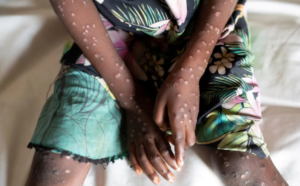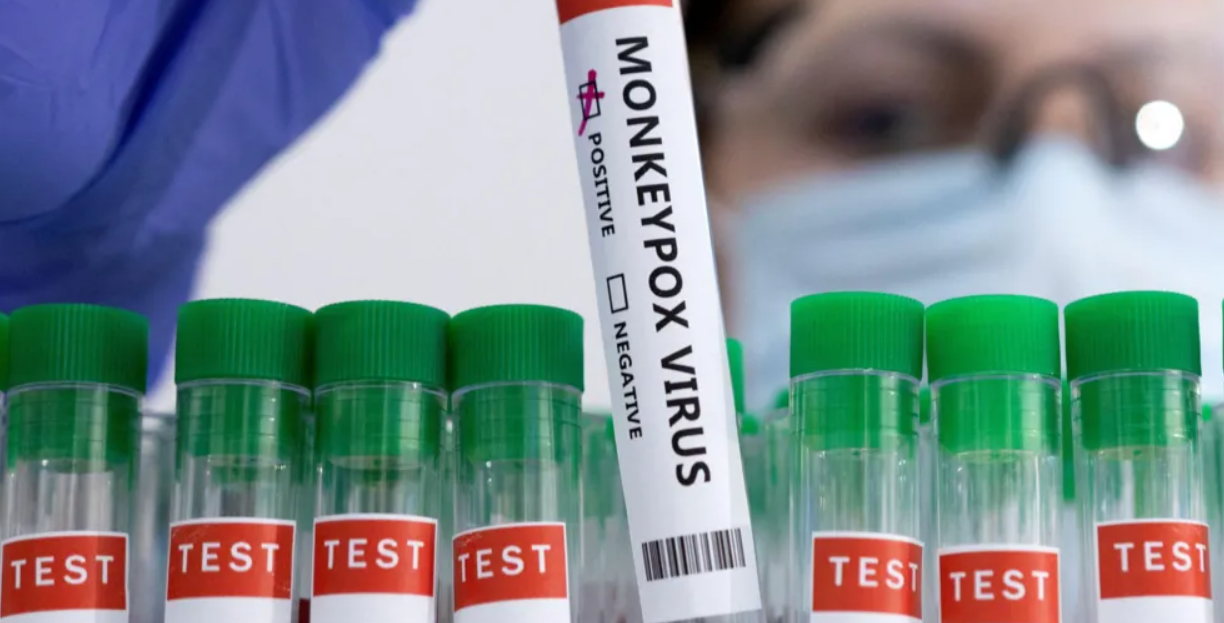new Mpox Virus Strain Raises Health Concerns Across the World
Officials in charge of public health are understandably worried about the fast spread of a newly identified mpox strain along the eastern border of the Democratic Republic of the Congo (DRC). This new information emphasizes the persistent difficulties of controlling infectious diseases in areas with inadequate healthcare infrastructure and has far-reaching consequences for world health.
The Novel Mpox Virus: A Comprehensive Overview
Because of its unusual traits, the most recent pox virus variety, discovered in September 2023, is very problematic:
1. Enhanced contagiousness: This variation seems to be more able to transmit than earlier strains through non-sexual intimate contact, which could expand its reach beyond typical populations at risk.
2. The severity of symptoms: According to health professionals, this outbreak is different from past ones; infected persons are sicker and more likely to die.
3. The possibility of transmission across borders: this strain can spread through casual contact, which makes it more likely that it will be transmitted internationally, particularly in border regions where people travel around a lot.
4. Individuals may unintentionally carry and transmit the virus without showing symptoms, which complicates containment efforts. This is known as asymptomatic dissemination.
The Influence of Epidemiological Data
Concerning data for the DRC in 2024 was reported by the World Health Organization (WHO):
– Almost 8,000 verified instances
The new strain had a mortality rate of 4% in adults and 10% in children, resulting in 384 fatalities, over half of which were minors under the age of 15.
Because many cases may go unreported or unnoticed in more rural places, these figures are probably understated.

A six-year-old girl with mpox in an outbreak in DR Congo in 2022
Center of the Epidemic and Its Dispersal
It is thought that the mining hamlet of Kamituga in South Kivu province is the birthplace of the new mpox strain. It then proceeded to expand to other cities along the eastern border of the DRC, such as Goma, which is next to Rwanda. The possibility of transmission to adjacent nations such as Burundi, Uganda, and Rwanda is heightened by this geographical trend.
Distinct Features of the Novel Varietal
There are a number of things that set this mpox strain apart from others:
While sexual contact is still the most common way for the virus to spread, it is now also possible for the virus to spread through non-sexual skin-to-skin contact.
2. Demographics: This strain is infecting a wider population, including children, healthcare workers, and entire households, in contrast to the 2022 global outbreak, which mostly afflicted males who have intercourse with men.
3. The seriousness of the illness: Some patients are dealing with serious problems, such as long-term impacts on their skin, eyes, and genitalia. A healthcare worker reportedly went blind after contracting the infection.
4. Concerns about pregnancy: The fact that some pregnant women have experienced miscarriages as a result of mpox infection brings attention to the possible concerns to the health of both the mother and the unborn child.
Difficulties in Controlling and Treating
Combating the spread of this novel mpox strain is complicated for a number of reasons:
First, people in the DRC have a hard time getting their hands on the immunizations and treatments they need because of the government’s red tape.
2. Lack of public education: Many individuals in impacted regions are unaware of the signs, transmission, and ways to avoid contracting mpox.
3. Conflicting health priorities: The Democratic Republic of the Congo is facing multiple other health crises, which could cause a shift in focus and allocation of resources away from trying to limit mpox.
4. Lack of research: Greater investigation into the new strain’s features, such as its transmission rate and vaccine effectiveness, is urgently required.
International Health Consequences
There will be far-reaching effects on international health security from the introduction of this new mpox strain:
1. The virus might readily transcend borders and reach other continents due to its greater transmissibility and the possibility of asymptomatic carriers.
2. Healthcare system strain: Countries with weak healthcare systems might find it difficult to handle a large-scale mpox epidemic, especially if it hits at the same time as other health problems.
3. Economic Impact: Similar to the COVID-19 pandemic, travel restrictions and economic difficulties could result from widespread transmission.
4. Worries about vaccination efficacy: It is still not known if current mpox vaccines will work against this new strain, which could lead to the need for new forms of prevention.
Urge Your Response
Scientists and health professionals in the DRC are calling for swift action to contain the mpox epidemic:
1. Enhanced immunization programs: One way to reduce transmission is to target high-risk populations with vaccination programs, including as healthcare workers and sex workers.
2. The implementation of strong monitoring systems to trace the spread of the virus and detect new instances promptly is of the utmost importance.
3. Global health organizations and nations must work together to stop the spread of the disease across borders and help those in need.
4. Research investment: In order to establish effective containment tactics, it is vital to accelerate investigations on the new strain’s features, treatment choices, and vaccination efficacy.
5. Public education: In order to contain the mpox virus at the community level, it is crucial to launch awareness campaigns that inform people about the symptoms, transmission pathways, and preventive measures.
As the world’s health experts face the problem of mpox, the situation in the DRC highlights the persistent difficulties in managing infectious diseases. It is feasible to limit this outbreak and avert a broader global health catastrophe by acting quickly and in concert, giving priority to research and allocating resources.



















